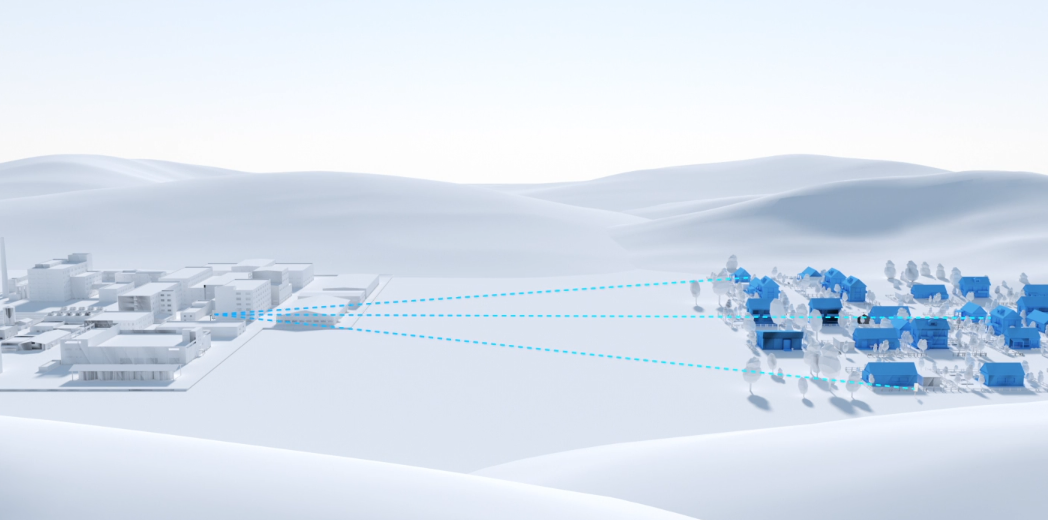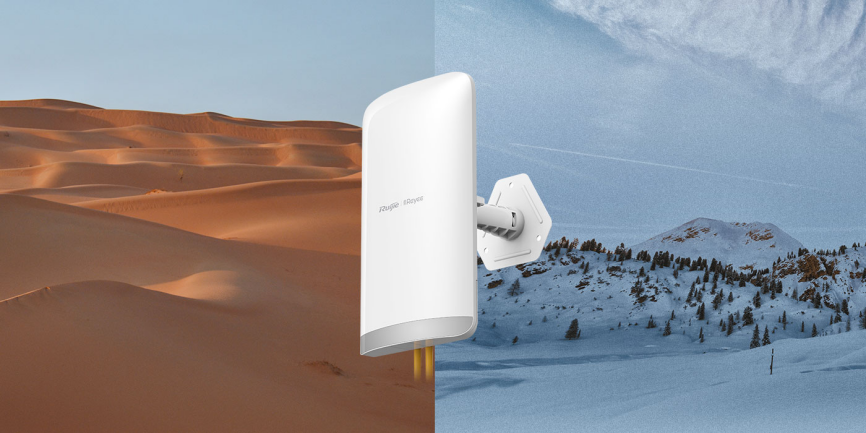Point-to-point wireless network bridge technology, with its advantages of long transmission distance, high stability, rapid deployment, and low cost, is widely used in various network connection scenarios. While providing flexible, efficient, and secure network connections, point-to-point wireless network bridge technology also faces numerous deployment challenges. The following is an analysis of its core advantages and deployment challenges.
Core Advantages of Point-to-Point Wireless Network Bridge
Point-to-Point Wireless Network Bridge technology enables connections between networks at different physical locations and is widely used in scenarios requiring long-distance network connections, data transmission, remote monitoring, temporary or emergency communications, and data center network expansion. Its advantages are quite evident:
Installation Convenience: Wireless bridging requires no wiring, avoiding ground excavation or wall drilling, making the installation process simpler, faster, and more efficient.
Cost Effectiveness: Eliminates expensive wiring costs, including material and labor costs, with cost advantages particularly evident in environments where wiring is difficult.
Flexibility and Scalability: Wireless bridging allows flexible network expansion between different locations, with no need for rewiring when adding or moving devices.
Environmental Adaptability: For complex environments where wiring is difficult, such as crossing rivers, mountains, or other obstacles, wireless bridging provides an effective and likely implementable connection solution.
Easy Maintenance: Wireless device maintenance and upgrades are usually simpler than wired systems as they don't require physical line contact.
Aesthetics: Wireless bridging avoids messy outdoor or indoor wiring, providing a more aesthetic solution, particularly suitable for environments where appearance is important.
Interference Resistance: Modern wireless technologies like Wi-Fi 6 and Wi-Fi 7 provide better interference resistance, enabling stable operation in complex wireless environments.
Rapid Deployment: In emergency situations or temporary settings, wireless bridging can quickly establish network connections to meet rapid communication needs.
Mobility Support: Wireless bridging allows users to move devices within coverage without disconnecting, which is very useful for mobile office environments.
Easy Upgrades: As wireless technology develops, wireless bridging devices can be upgraded through software to improve performance, while wired systems may require hardware replacement, making the former's expansion costs relatively lower.

Deployment Challenges of Point-to-Point Wireless Network Bridge
Distance Limitations: Wireless bridging has limited effective range, and signals attenuate beyond certain distances, affecting performance.
Stability Issues: Compared to wired connections, wireless connections may be less stable in certain situations.
Signal Interference: Wireless bridging devices need to be kept away from other electronic devices to reduce electromagnetic interference, which could otherwise affect signal stability and network speed.
Power Stability: Power supply for wireless bridging devices must be stable and located in a secure position to prevent damage or accidents.
Lightning Protection: If devices are mounted at height, lightning protection measures are needed, using copper core wire for grounding.
Technical Requirements: Wireless bridging requires professional knowledge and tools for wiring, making the installation process potentially more complex.
However, manufacturers of these products in the market often provide reliable measurement and installation services. Taking Ruijie Reyee as an example, their wireless bridging equipment products all adopt easy-to-install designs, and professional engineering teams provide reliable services from equipment selection to formal installation, debugging, and maintenance, eliminating users' concerns. Ruijie Reyee wireless bridging equipment's outstanding performance and long-lasting durability are widely recognized, with broad coverage of applications.

Therefore, although point-to-point wireless network bridge technology has many advantages, it also has some limitations, such as potential signal interference and restrictions from transmission distance and obstacles. As a result, when choosing between wireless bridging and traditional wired bridging, users need to understand the specific differences and advantages of each solution, and make their final decision based on specific application scenarios and requirements
Featured Articles
- Networking Tools for Retail Stores: The Core Value of Cloud-Managed APs












